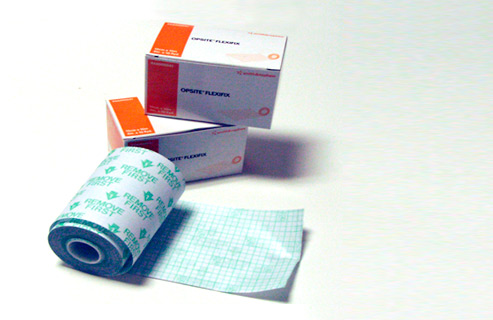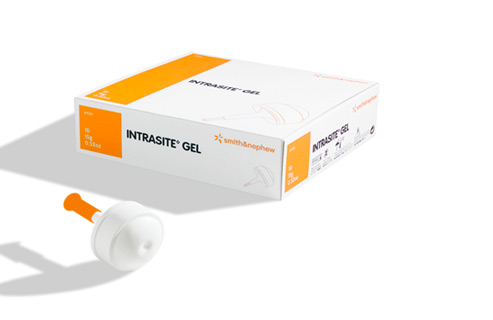7.0 Different types of wound dressing 
There are many wound dressings available. Please note that the practitioner should always consult the local wound care formulary when considering the most appropriate dressing to select.

Semi permeable film of polyurethane: this is a film which hinders water and bacteria from entering the sore, but at the same time allows the wound to breathe to a certain extent. The film is see-through, so that the wound can be inspected at regular intervals. This should not be used on weeping wounds as a primary bandage.

Foam bandages: are made of polyurethane or silicone foam and can absorb large quantities of exudate. Foam bandages do not stick to the wound surface, prevent water and bacteria from entering the wound but at the same time, can allow the wound to breathe to a certain extent.

Alginate and hydrofibre dressings: these dressings consist of highly absorbent fibres, which transform moisture into gel, providing a moist healing environment which does not stick or exert pressure on the wound. These dressings are used especially where there are ulcers and wounds with lots of exudate. Given adequate drainage, these dressings can aid autolytic debridement and uncomplicated, atraumatic removal.

Hydrogel is used on both dry wounds and wounds with minimal exudate, to help loosen necrotic tissue. Can emit liquid in wounds where there is little exudate or absorb liquid in wounds with moderate exudate. Creates a moist wound healing environment.

Hydrocolloids: are dressings which are breathable, but also anti-bacterial and waterproof. Works just like a foam dressing, but often does not draws not as much liquid. These dressings are often transparent so that the wound can be observed.

Dressings for critically colonised wounds: Silver bandages give an even antimicrobial activity over the whole of the wound bed. They can manage weeping and provide an effective antimicrobial barrier. They can also absorb and bind bacteria. These types of dressings are used on colonised wounds and infected wounds. Iodine bandages may also be used.

Dressings for odour control: dressings and bandages that contain carbon (coal) are often used on cancer wounds in cases where illness is terminal and all other treatment is discontinued. The aim of which is to provide the patient with as much comfort as possible towards the end of their life, keeping any chronic wounds odour free. Of this type of dressing, there are also absorbent bandages (held in place with either elastic gauze or tape), pressure relieving dressings, silver antimicrobial bandages and adhesive dressings.




